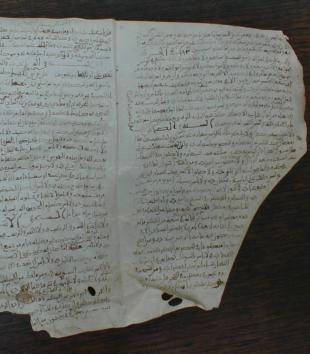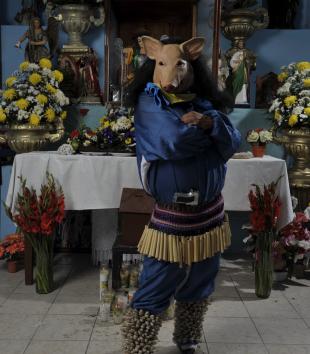It is an unusually warm February day as I drive through Amish country in central Pennsylvania to Coatesville, about an hour west of Philadelphia. I am heading to the mazar or shrine of M. R Bawa Muhaiyaddeen (d. 1986), a Tamil teacher from Jaffna, Sri Lanka. Bawa came to Philadelphia in October 1971 at the request of one of his Sri Lankan disciples who was living in the city. Upon Bawa’s initial visit to America, he attracted many followers from the African-American communities in Philadelphia as well as spiritual seekers from Euro-American backgrounds, making the Bawa Muhaiyaddeen Fellowship, the community that formed around Bawa and his teachings, ethnically and religiously diverse. The Fellowship is centered in Philadelphia, where Bawa resided during his time in the United States, although Bawa also periodically returned to Sri Lanka to meet the needs of his Hindu, Muslim, and, at times, Buddhist and Christian followers there. From 1971 until his death in 1986, Bawa’s communities in Sri Lanka and the United States developed a transnational network that continues to exist today.
After Bawa’s death his followers buried him in Coatesville, Pennsylvania, where the Fellowship had already purchased over fifty acres of property at Bawa’s request to serve as a community cemetery. Over time, the Fellowship also used the property to cultivate a small horticultural project and then a welcome center, which included a kitchen. Bawa’s burial would distinctively transform the cemetery and farm into a site of commemoration. The members of Fellowship began to build the mazar that now stands on this property nearly a year after Bawa’s death. Initially, only a simple fence marked Bawa’s burial place. As Bawa had not left instructions, his senior disciples debated whether or not to raise a memorial for their shaykh (teacher), but eventually members agreed to a proposed design by Michael Green, an artist and senior member of the Fellowship. Green explains his vision for the design in my interview with him. The final mazar, completed in just three days, stands ten feet above Bawa’s tomb, which remains untouched by the structure.
Many who visit the shrine for the first time allude to its architectural similarity to the Taj Mahal in India. This is intentional; the design and building team felt that the resemblance to the Taj Mahal captured Bawa’s South Asian origins while the beauty of the structure honored their teacher. The large white central dome topped by a silver crescent standard is similar to mosque designs seen in Muslim spaces across space and time. The shrine has four sets of doors, one set facing each of the cardinal directions. For Green, this feature was reflective of the Muslim and non-Muslim membership of the Fellowship and their equal access to Bawa, whose tomb beneath the large dome aligns at the center of the paths of all four doors. The shrine stands at the apex of the only significant elevation on the property and its architectural features focus on the tomb. Many disciples informed me that they remember Bawa standing on precisely this spot when he was alive.
Since its construction in 1987, the shrine has become the distinguishing feature of the now over a hundred acres of property. The site also includes a cemetery, welcome center, bathroom facilities, meeting hall, and picnic tables. Beside the shrine is a garden project and behind the shrine are acres of fruits and vegetables. In the nearly three decades since Bawa’s death and burial, this sacred space continues to experience transformations. At time of writing, the community awaits judgment as to whether or not the new mosque they have proposed can be approved under the current by-laws, in addition to a library and archive building and more residential housing. Fellowship members, including new members, some from South Asian backgrounds, have already provided the necessary funding for these new structures.
Sufi teaching often discourages attachment to forms, especially the bodily or earthily kind, but mazars, and particularly Bawa’s shrine, challenge materiality in a very nuanced way. The power of the mazar is predicated on the bodily remains of a Sufi shaykh or other charismatic holy figure, often perceived as a saint (wali) due to their spiritual proximity to God. With the saint’s death, adherents understand the saint to have returned to God. The community thus commemorates the death date as a wedding anniversary (‘urs). For members of the Bawa Muhaiyaddeen Fellowship, this annihilation of the self and unity with God in the afterlife creates a distinct threshold through which earthly pilgrims can access the graces of God. It is this accessibility that has popularized Sufi shrines historically and continues to do so today. Most Sufi shrines are established on the materiality of the saint’s remains.1 At Bawa’s shrine, his entombment grants followers access to and experience of God. It is this unity that pilgrims seek, a unity that they hope to achieve in life and in death.
Bawa’s shrine also plays a role in the maintenance of community unity and cohesion. While for senior disciples who encountered Bawa personally the mazar serves as a tangible memorial for their master, the mazar simultaneously represents the authority Bawa maintains after death, even for followers who did not meet him in life. The community did not elect a new leader to replace Bawa after his death and so he continues to serve as the community’s shaykh. Usually Sufi communities require living teachers to lead them, continuing the lineage (silsila) in a master-disciple relationship that traces back to the Prophet Muhammad.2 For the Fellowship, however, the absence of a living authority results in a reconceptualization of the purpose of the mazar. It is more than just a site of grace (baraka), it is also a physical location that preserves and affirms the authority of their shaykh. For the Fellowship, the authority of the shaykh is not continued in a living figure. The authority of the living shaykh of this American Sufi community lies in the tomb in Coatesville, Pennsylvania.
Notes
Notes
1. That being said, Sufi shrines do not always contain the bodily remnants of a saint. For instance, a shrine can commemorate physical contact of a saint or contain personal items associated with the saint. The saint is often the conduit of baraka, but that baraka can manifest in varied physical forms.
2. However, the lack of a direct and living authority in a Sufi community is not without precedent. Sufi orders, such as the Uwaisi order and/or traditions associated with Khidr, the mystic perennial prophet and saint, are examples of Sufi communities where authority is retained through spiritual connection and not through a living master.
Keywords
Imprint
10.22332/con.obj.2016.5
1. M. Shobhana Xavier, "An American Sufi Shrine, Bawa’s Mazar in Coatesville, Pennsylvania," Object Narrative, in Conversations: An Online Journal of the Center for the Study of Material and Visual Cultures of Religion (2016), doi:10.22332/con.obj.2016.5
Xavier, M. Shobhana. "An American Sufi Shrine, Bawa’s Mazar in Coatesville, Pennsylvania." Object Narrative. In Conversations: An Online Journal of the Center for the Study of Material and Visual Cultures of Religion (2016). doi:10.22332/con.obj.2016.5




